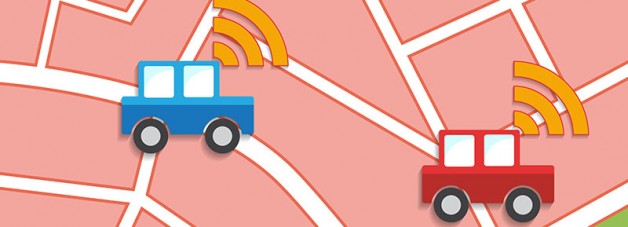In the past two years or so, the innovative minds of Silicon Valley have touched another aspect of our lives, and transformed how we use transportation. The premise behind ride sharing apps is simple: the company hires drivers that drive around wherever they happen to be (usually major cities), and wait for people to request them for rides. The drivers are usually well vetted, so you’re not going to get someone with a few DUIs driving you around. Fares are usually cheaper than taxis, and you ride in someone’s personal car (usually marked with a sticker in the window denoting which company the driver works for). No gross taxis or waiting for one on the side of the street; these drivers come to you, on demand. And, you can usually see how other customers have rated your driver. Drivers with a consistent poor enough rating will eventually be fired. On the reverse side, drivers also rate passengers, so that other drivers can know if you tend to be later or rude. They don’t have to pick you up if they don’t want to, which sometimes leads to the problem of not being able to get a driver within a reasonable amount of time. But from my personal experience, this has only happened once. The nice thing about ride sharing services is that there are several to choose from (Uber, Lyft and Sidecar are the most popular), so if you can’t get an Uber (which hasn’t happened to me yet), you can try another service. Not to mention by carpooling you limit your carbon footprint, so ride sharing definitely gets bonus points in my book for being a service that helps reduce environmental impact.
Since Uber internationalized its services in 2012, millions of people have signed up for the company’s service. So if this whole ride sharing thing seems a bit sketchy, it’s nice to know that a lot of other people are using it. Now if you’re getting into a car with a stranger, that can still seem a bit unsettling. It’s true that ride sharing companies have had their fair share of legal issues, leading them to be banned in certain countries or face certain legal restrictions. And the companies know that. For example, Uber is testing a “SOS” feature on its app in India, so that passengers can call police and send them their location, along with driver information. Lyft is already known for its intense driver screening policies. Sidecar has GPS in each car, and provides insurance for riders. From personal experience, I have to say my ride sharing experiences have been pretty positive, and especially convenient if you don’t have a car or take public transportation to get around. And I’ve heard stories of some drivers going above and beyond to help their passengers, everything from helping put groceries in the car to driving extra miles for free. So if you need a quick ride somewhere, take a look into riding sharing applications. So far, I have to say that the convenience and affordability of these services have kept me coming back. And as I still have a few more years in college without access to a car, I’ll definitely continue to use these handy companies.

